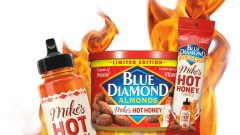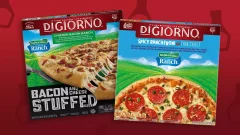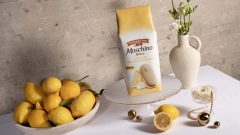The Definitive Guide to Ramen & Life After Cup Noodles

Ramen – a dish that I crave regularly that gets put down by those who don’t truly understand why it’s so damn delicious.
Think about it – have you ever had a bowl of ramen? You know, a real bowl of ramen, one that’s not microwaved for about 3 minutes in a Styrofoam cup? If not, then you, my friend, have a lot to learn.
This is real ramen:
This is instant ramen:



You see the difference?
Up until I went to college, I never had a bowl of ramen from a restaurant, and never actually had any inclination to order one. If I could buy a cup for less than a dollar and have it ready to eat in under 5 minutes, why would I have (or even want) to pay “premium” price for something I could eat in my room? Reluctant to spend seven bucks on a bowl, I took a sip of faith and felt like I was alive for the first time. Right now you might be thinking, “Ramen is ramen, what’s the big fuss?” and I don’t blame you. However, let’s do a quick comparison below:
This is a burger from McDonald’s:

This is a burger from The Playground in Downtown Santa Ana, California:

Hopefully, this is clicking somewhere in your brain that there’s more to ramen than just dry packets that you add hot water to.
The main picture here basically boils down to convenience vs. quality. College meant eating cheap food, and instant noodles just so happened to be one of the cheapest, easiest foods to dish up. Coming from a less-than-middle class background, I also grew up eating ramen because you could feed an entire family of 6 for very little when you buy those noodles in bulk.
Before I continue and before you complain that ramen noodles are sodium bombs, let’s make a few things clear. Think about what you’re eating for lunch, or how much salt is in that burger combo you had for lunch yesterday. There’s a good chance that they have the same amount of sodium, so don’t whine until you’ve had an actual bowl!
Styles
Moving on, there are tons of different ramen styles depending on the location. For comparison’s sake, think of the all-American burger. All across the states, you can find burgers with cheese, bacon, French fries, BBQ sauce, California Roll ingredients, you name it.
In Japan, there are 26 different types of ramen. However, for the sake of keeping things simple in this article, we will cover the four most common flavor types: shio, shoyu, miso, and tonkotsu (not to be confused with tonKATsu, which is breaded, deep-fried pork cutlet).
Shio
Shio literally means ‘salt’ in Japanese and is one of the oldest of the four soup bases. Generally the shio broth has a clear yellowish color than the other bases listed below. The above, however, is a tad bit red because I was lucky enough to order a spicy version (good luck ordering spicy shio, aka karashio, at a Santouka near you).
Shoyu
Shoyu, which means ‘soy sauce,’ is another old-school ramen soup base. While brown in color, the soup is usually light, salty and savory.
Miso
[H/T + PicThx Shizuoka Gourmet]
Miso paste is used in the soup base and is the newest of the bunch. This type of broth is generally thicker, richer, and has a slight sweetness to it.
Tonkotsu
Tonkotsu, which means ‘pork bone,’ is my favorite of the three broths and just so happens to be the fattiest one. Tonkotsu is very similar to shio ramen, but is made with pork bones that have been boiling over high heat for hours, resulting in this cloudy, fatty, white-colored broth that is the most savory of the four. I could eat tonkotsu ramen every day if I could.
Noodles
Since I grew up eating the instant packets of ramen, I was only familiar with the dry, curly, Justin Timberlake-like yellow noodles that you could totally eat raw. However, the types of noodles in these bowls all depend on the style of ramen that you’re feasting on. But, without going into the specifics of region, location, and the history behind each bowl, I’ll just say that you’ll typically find these familiar curly noodles, as well as thin, straight noodles.
Toppings
Since the instant packets usually just came with gross, dried vegetables, I rarely ever had any toppings besides the occasional mixed egg and random greens from the fridge. As you can see from the pictures, I never expected to eat my noodles with such tender pork slices. In a typical bowl of ramen, you will usually find thin slices of chashu (braised pork that typically omits the sugar and five-spice powder from its Chinese counterpart), scallions, and slices of bamboo. Other favorites include dried seaweed, boiled egg, one slice of naruto (cured fish) and corn.
Although traditionally a Chinese dish, Japanese ramen has clearly deviated in taste, toppings, and style from its original predecessor. Thanks to food blogs, Yelp, and the growing number of foodies who Instagram, ramen shops have gained traction and are on the rise in big cities. While some restaurants serve ramen among their other food items, there’s a high chance that you’d get a more delicious bowl if you went to a ramen shop. Of course, there are exceptions, but this is generally the case.
If I could have you try something new this year, it would definitely be to try the four different types of ramen. Hell, you could even just buy higher quality ramen at an Asian market. Do yourself a favor and walk to the refrigerated section; you should see the packets hanging out next to the refrigerated udon noodles and potsticker wrappers. If you can’t read Japanese, just read the price tags and look for the English there. It is so worth the extra cash.
Proof it exists.
So eat, chomp, and slurp if you want to! I know what I’m eating tonight and you’re always welcome to join.
H/T + PicThx Kobi’s Kitchen, GO RAMEN!, Shizuoka Gourmet & Wikipedia




































